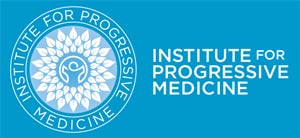Niacinamide Can Prevent Birth Malformations

This compound is called NAD (nicotinamide adenine dinucleotide). It is produced from the amino acid tryptophan under the influence of niacin. Niacin is vitamin B3, and may be deficient in diabetics and others with nutrient inadequacies. Another form of vitamin B3, niacinamide, also increases the production of NAD, which is beneficial.
Niacin supplementation in mice has already been shown to prevent these genetic defects. It would likely offer the same protection in humans, and in the form of niacinamide there are no side effects.
Niacinamide is an inexpensive nutrient therapy that can avert birth defects due to deficiencies in energy production and mitochondrial function. It would be useful for pregnant women to take niacinamide to prevent fetal deformities, as they do folic acid to prevent neurological defects. I recommend a dose of 500-1000 mg a day.
Niacinamide May Prevent Eye Damage from Glaucoma
Studies in mice indicate that niacinamide supplementation prevents damage to retinal cells caused by increased intraocular pressure. The effect is dose dependent, meaning the more you supplement niacinamide, the more pressure is reduced. (NEJM May 25, 2017 pp 2079-81)
Niacinamide supports production of NAD (niacinamide adenine dinucleotide), important in providing energy to retinal nerve cells. Low NAD makes these cells more susceptible to damage from increased pressure. Mitochondria, the energy factories within cells, become less efficient. Free radicals are formed, and this metabolic stress causes loss of retinal cells.
Niacinamide in high dosage prevented retinal cell loss. Would niacinamide protect vision in humans? Most likely. Studies have not yet been done, but niacinamide is safe, even in high doses. Visual loss in glaucoma is often difficult to prevent, and patients are prescribed daily doses of intraocular medications, sometimes two or three together, with adverse effects including eye irritation. When the eyedrops fail, surgery is often performed to lower intraocular pressure.
I recommend a trial of niacinamide for persons with increased intraocular pressure or evidence of retinal cell degeneration and visual loss. Start with 500 mg a day and increase gradually to 1500 mg in divided doses, 500 mg after each meal. Avoid niacinamide if uric acid is high, as niacinamide may precipitate gout. If you have a question about this, ask your doctor. Have visual acuity and visual fields measured periodically by your eye doctor.
Allan Sosin MD


